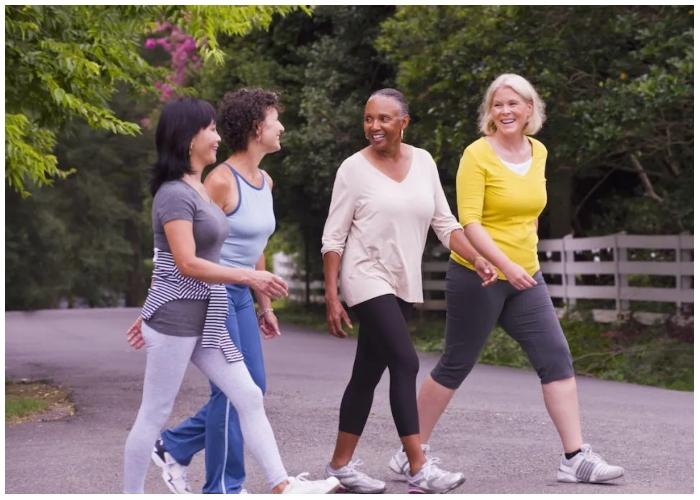In 2025, wellness no longer looks like high-intensity workouts, sweaty boot camps, or shouting spin instructors. For more and more people, the new gold standard of feeling good starts with simply… moving a little. Mild movement is gaining quiet momentum as one of the most sustainable and approachable wellness trends of the year. From gentle stretching to slow walks, people are discovering that the path to feeling better isn’t always paved with sore muscles and maxed-out heart rates. Instead, it’s rooted in consistency, calm, and connection to the body.
Movement, Not Exercise
People are shifting away from the idea that only exercise counts as movement. In 2025, mild movement includes everything from standing up to fold laundry to taking a short stroll between meetings. This shift is helping people reframe their relationship with physical activity—especially those who’ve felt left out of the fitness conversation. It’s not about intensity or aesthetics anymore. It’s about gently supporting your body throughout the day, in ways that feel realistic and restorative.
Burnout Changed the Fitness Conversation
The burnout epidemic didn’t just push people out of workplaces—it pushed them away from their workouts too. The pressure to constantly “do more” started to feel just as exhausting in the gym as it did in the office. That’s why gentle movement routines like mobility flows, slow mat Pilates, and tai chi have found new audiences. In 2025, many people are asking: why punish your body when you could simply care for it?
Walking Is Having a Renaissance
Daily walks have quietly become the wellness equivalent of gold. No gym membership, no expensive equipment, no digital subscription—just shoes, breath, and movement. People are using walks to clear their minds, reconnect with nature, or simply break up their day.

Many are calling it their “non-negotiable,” and not because it burns calories, but because it calms the nervous system and gets them out of their heads.
It’s More Accessible—And That Matters
Mild movement has become a democratizing force in wellness. It doesn’t require a fit body, specialized clothes, or a curated space. Whether you live in a city apartment or a rural town, have chronic pain or a hectic job, you can find ways to move gently. This inclusivity is what’s making it stick. Unlike other trends, this one meets people where they are—and welcomes them as they are.
From Sweat to Soothing
For a long time, we were conditioned to equate fitness with sweat. If we didn’t leave drenched and out of breath, it “didn’t count.” Now, people are starting to prefer movement that feels good in real time—not just afterward. Mild movement offers an immediate sense of comfort and presence, especially when paired with deep breathing or calming music. It’s less about chasing results and more about tuning into the moment.
Wellness Is Finally Considering Fatigue
In 2025, more people are openly discussing fatigue—mental, physical, emotional—and realizing their bodies don’t have the reserves for punishing routines. Mild movement doesn’t drain energy—it restores it. Instead of pushing through exhaustion, people are learning to move in ways that give something back, helping them recharge rather than crash. For many, this has been the missing link in their wellness routine.
Body Respect Over Body Punishment
The shift toward gentle movement isn’t just about comfort—it’s about respect. There’s a growing awareness that pushing the body to its limit isn’t always an act of strength. Mild movement teaches people to listen to what their bodies need instead of overriding it. Whether it’s a slow side stretch or a mindful neck roll, these small acts become daily gestures of kindness to the body—no competition, no comparison, just care.
People Want Habits That Actually Stick
Extreme routines are hard to maintain, which is why they so often fail. Mild movement, on the other hand, integrates easily into daily life. You can stretch while watching TV, take phone calls while walking, or do ten minutes of yoga before bed. Because it doesn’t demand perfection or dedication to a specific “program,” it’s easier to build momentum and keep showing up day after day.
It’s Becoming Emotionally Regulating, Too
Mild movement isn’t just good for the body—it’s becoming a core part of mental wellness. Light mobility flows, swaying stretches, or just moving around a room can help release emotional tension. Therapists are even recommending gentle movement as a strategy for managing anxiety, regulating nervous systems, and grounding after stress. For people who live mostly in their heads, this kind of movement brings a return to the body—and a surprising sense of safety.
This Might Be the Most Sustainable Trend Yet
Unlike trends that spike and fade, mild movement is gaining long-term traction because it doesn’t ask people to change their lives—it adapts to them. It’s gentle enough to be sustainable, supportive enough to make a difference, and simple enough to actually do. In a world where so many wellness routines demand time, money, and energy, this one offers a refreshing alternative: show up, move a little, and let that be enough.